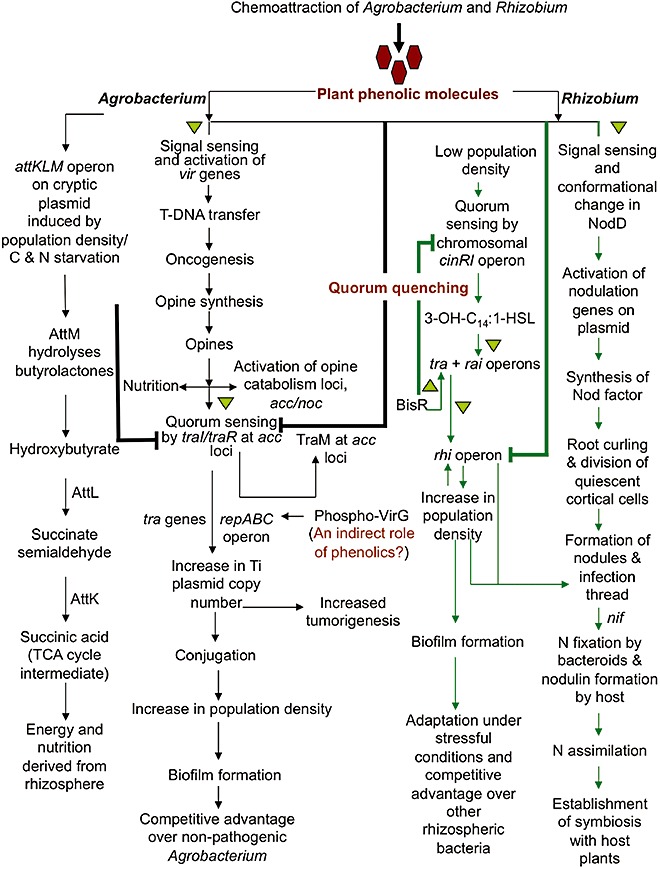Figure 2.

The use of phenolics by Agrobacterium and Rhizobium for survival and infection of the host plant. Black arrows indicate how Agrobacterium uses phenolics to initiate a complex process of pathogenesis, culminating with opine synthesis. In addition to their nutritional value, opines help Agrobacterium's competition with nonpathogenic bacteria, such as A. radiobacter, by increasing its population density and biofilm formation through quorum sensing. Agrobacterium also uses the attKLM operon to regulate its population density during times of nutritional starvation and to synthesize alternative sources of nutrients and energy by degrading γ‐butyrolactones produced by other rhizospheric bacteria. Green arrows indicate the use of phenolics by Rhizobium leguminosarum bv. viciae for the induction of nod genes followed by the process of symbiosis. Under stress conditions, phenolics also regulate the increase in population density, biofilm formation and effective nodulation by repressing the quorum‐sensing rhi operon. An increase in population density as a result of quorum sensing provides a competitive edge to rhizobia over other rhizospheric bacteria. Bold lines indicate the quorum‐quenching mechanisms, whereas triangles represent the steps of activation. TCA, tricarboxylic acid.
